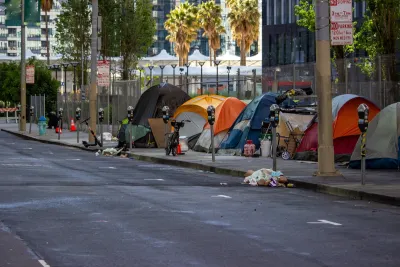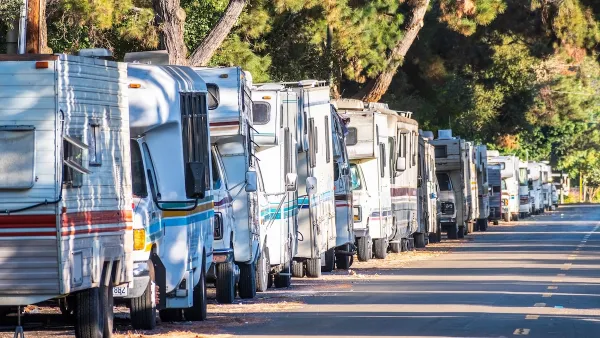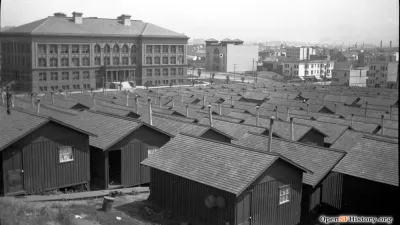Mayor Lurie’s three-phase plan promises 1,500 new shelter beds and a restructuring of outreach teams and supportive service programs.

A new plan from San Francisco Mayor Daniel Lurie seeks to reduce homelessness in the city, providing what the mayor says is a comprehensive strategy for reducing the impacts of the drug epidemic and helping unhoused people get into emergency and long-term housing.
“At a Monday press conference, Lurie said the overarching objective is to more effectively get people off the street and connected to recovery services while preventing more people from becoming unhoused,” notes an article for ABC7 News by Lena Howland, Luz Pena, and Monica Madden.
The plan’s first phase, which will be rolled out over the next 100 days, includes the restructuring of street outreach teams and a strategic focus on the neighborhoods with the highest need. While the mayor says the plan will reassess the distribution of “drug paraphernalia,” it does not intend to limit needle exchange programs, which the mayor says are upheld by “longstanding evidence-based public health interventions.”
The plan pledges to add 1,500 new shelter beds in the next six months and increase case management services. “And after one year, the mayor's office has the goal of maximizing state, federal and local funding sources, improving technological systems for data tracking of efficacy, and examining the organizational structure of the city's programs that deal with these issues.”
FULL STORY: SF Mayor Daniel Lurie announces new 'Breaking the Cycle' plan to address homelessness crisis

Planetizen Federal Action Tracker
A weekly monitor of how Trump’s orders and actions are impacting planners and planning in America.

Congressman Proposes Bill to Rename DC Metro “Trump Train”
The Make Autorail Great Again Act would withhold federal funding to the system until the Washington Metropolitan Area Transit Authority (WMATA), rebrands as the Washington Metropolitan Authority for Greater Access (WMAGA).

The Simple Legislative Tool Transforming Vacant Downtowns
In California, Michigan and Georgia, an easy win is bringing dollars — and delight — back to city centers.

The Small South Asian Republic Going all in on EVs
Thanks to one simple policy change less than five years ago, 65% of new cars in this Himalayan country are now electric.

DC Backpedals on Bike Lane Protection, Swaps Barriers for Paint
Citing aesthetic concerns, the city is removing the concrete barriers and flexposts that once separated Arizona Avenue cyclists from motor vehicles.

In These Cities, Most New Housing is Under 441 Square Feet
With loosened restrictions on “micro-housing,” tiny units now make up as much as 66% of newly constructed housing.
Urban Design for Planners 1: Software Tools
This six-course series explores essential urban design concepts using open source software and equips planners with the tools they need to participate fully in the urban design process.
Planning for Universal Design
Learn the tools for implementing Universal Design in planning regulations.
Smith Gee Studio
City of Charlotte
City of Camden Redevelopment Agency
City of Astoria
Transportation Research & Education Center (TREC) at Portland State University
US High Speed Rail Association
City of Camden Redevelopment Agency
Municipality of Princeton (NJ)





























